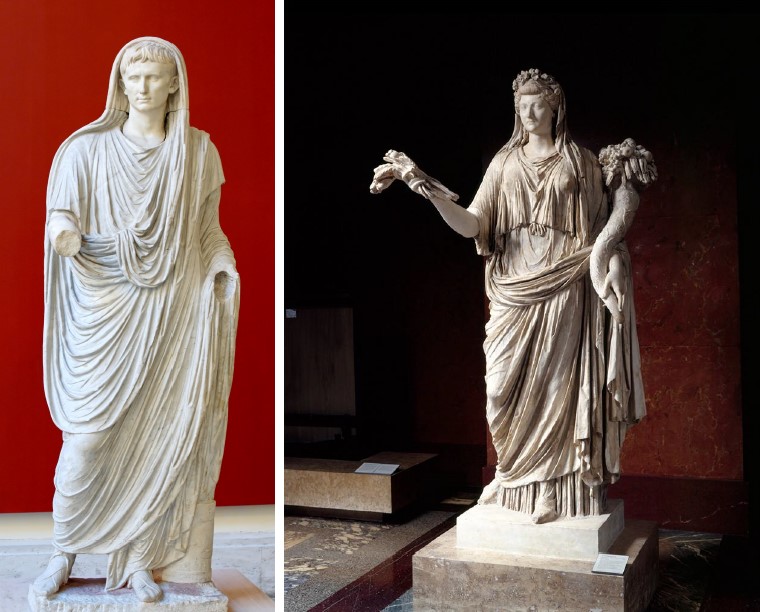
Augustus, the first emperor of Rome, came to power after the assassination of Julius Caesar and the tumultuous conflicts that characterized the late republic. While defining his role as the first Roman emperor, Augustus styled himself as a restorer of the republic, introducing dramatic innovations while integrating Roman traditions into a widespread multimedia program of propaganda. His transformation of the Roman city included the construction of new buildings and monuments featuring a national mythology that linked him to legendary gods and historical figures. Additionally, he integrated his own
household and family religion into the Roman state religion, and promoted members of his own family through buildings and monuments. His propaganda program emphasized
his roles as both an accomplished military leader and a bringer of peace, and he professionalized the Roman army. The age of Augustus was also marked by a flourishing literary and epigraphic culture. In this class, we will study a range of primary sources for the age of Augustus, including visual, topographical, literary, and epigraphic evidence, while also discussing a variety of secondary scholarship. Additionally, we will explore the life of Augustus, discussing how he defined his own identity and was influenced by his relationships with friends, family members, and political rivals.
More details at: https://www.unl.edu/classics/